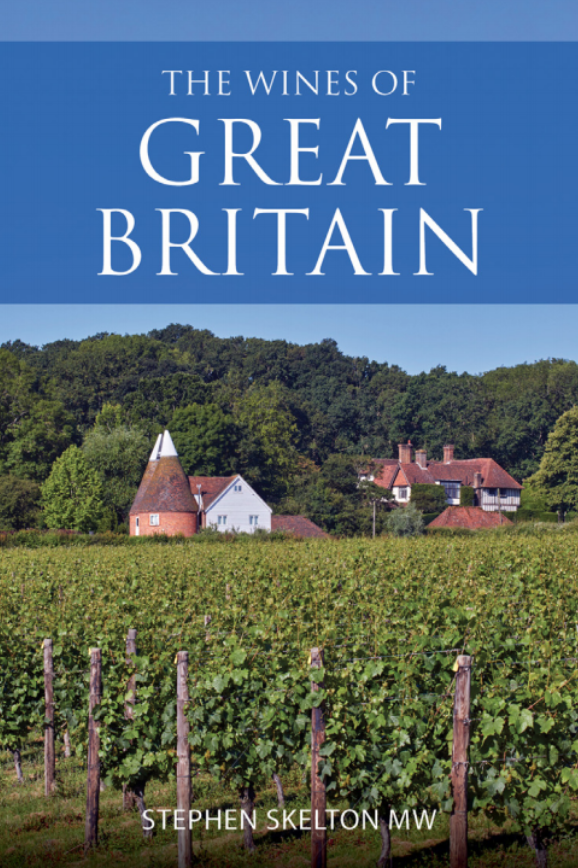Stephen Skelton MW is without doubt an authoritative writer on the subject of Great Britain’s vineyards, not only as a highly regarded expert on viticulture (his book Viticulture: An Introduction to Commercial Grape Growing for Wine Production is the viticulture bible for diploma and MW students) but he’s also been a keen observer and participant in British wine for over 40 years.
Having joined the English vineyard association in 1974, when barely 200 hectares of vines existed, Skelton has witnessed incredible changes in the industry — from the perspective of a writer, educator and communicator, but also as a British winemaker. It’s with this insight that he is able to paint a detailed and comprehensive view of English and Welsh wine in The Wines of Great Britain, published earlier this year.
Skelton explores the long history of winemaking on these isles without taking any prisoners. He calls into question claims that the Romans planted vineyards here in the third century, and instead emphasizes that the only importance England had in the wine industry at this time was its genesis as a wine consuming nation.
From the 10th century onwards, however, Skelton says there’s little doubt that can be cast over viticulture existing in the UK. From thereon in he gives a more detailed account of the evolution of the main wine regions, which were notably documented in the Doomsday Surveys and tied to the ebbing importance of the monastery and changes in the religious order.
Entertaining anecdotes about historic vineyards and producers in the UK give an insight into how British wine was received at the time. In the case of Castle Coch in Wales, there is remarkable detail about the vintages in the late 1800s, including wry comments from the press at the time (Punch magazine claimed you needed four people to drink a bottle of Castle Coch wine — two to hold the victim down and one to pour it down his throat).
Despite a few handfuls of brave vignerons, it wasn’t until post World War II that the British wine industry could even be considered such, and notably more so with the arrival of German crosses and hybrids which were more suitable to the marginal climate of Britain.
He recounts the changing fate of English Seyval Blanc, Müller-Thurgau and sweetened German-style wines which reached a peak in the early 90s when the UK boasted over 1,000 hectares under vine.
Skelton details the modern rise of viticulture (from 2004 onwards) and weaves in the many factors that have influenced it: climate change; improved knowledge and materials; and what he calls the ‘Nyetimber effect’ (whose early success inspired a generation).
We are, perhaps, all aware of the positive impact that climate change has had on the potential for Great Britain to become a well-known wine producer. Higher temperatures, during both day and night, with drier and sunnier spells have increased the likelihood of being able to produce more balanced and mature grapes. However Skelton also details a lesser-known impact of climate change — how the extreme weather events have notably reduced yields. It’s with this same balanced view that he calls into question other phenomena leading to the growth of wine production in the UK and the sustainability of its future.
Certain sections in The Wines of Great Britain certainly feel more oriented for the industry expert or student of wine rather than the consumer. Detailed sections on viticulture (with a strong focus on trellising and rootstocks), wine laws and industry associations will appeal more to industry insiders than regular wine consumers. But most readers will be able to engage with the personal histories and accounts in the producer profiles, which occupy a large part of the second half of the book.
Rather than cover the 500-odd producers in the UK today, Skelton chooses to go into profound detail about 21 wineries across England and Wales. Between them, he manages to cover most of the spectrum of British wine, taking the reader through, for example, the boutique vineyard of Breaky Bottom in East Sussex to the Hampshire vineyard of major retailer Waitrose, or the new vines of Flint Vineyard in Norfolk to the ‘old school’ varieties made in Staffordshire by Halfpenny Green Wine Estate.
There’s a wide range of wines, vineyards and business models covered and he expertly shows how there are many different faces and actors engaged in the growing industry of British wine today.
The Wines of Great Britain is an academic and comprehensive guide which provides a great reference work for the past 2000 years of wine production history in the UK, and lends us Stephen Skelton’s personal view of where it might go in the future.
A must-read for anyone currently working with, or aspiring to work with, the growing production of wines and sparkling wines coming from England and Wales.
Review by Amanda Barnes
The Wines of Great Britain by Stephen Skelton MW was published in May 2019 by Infinite Ideas.

